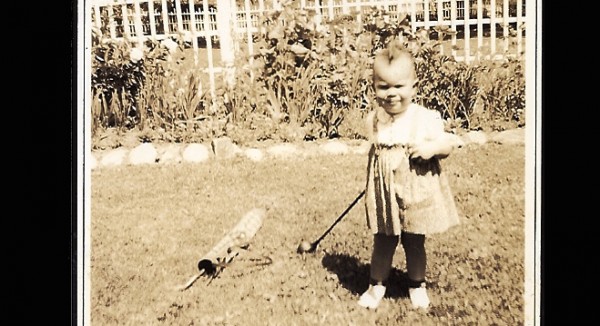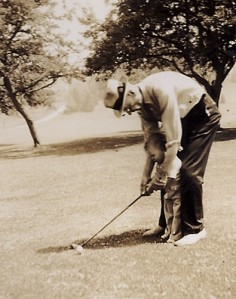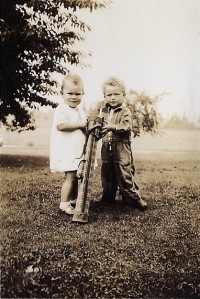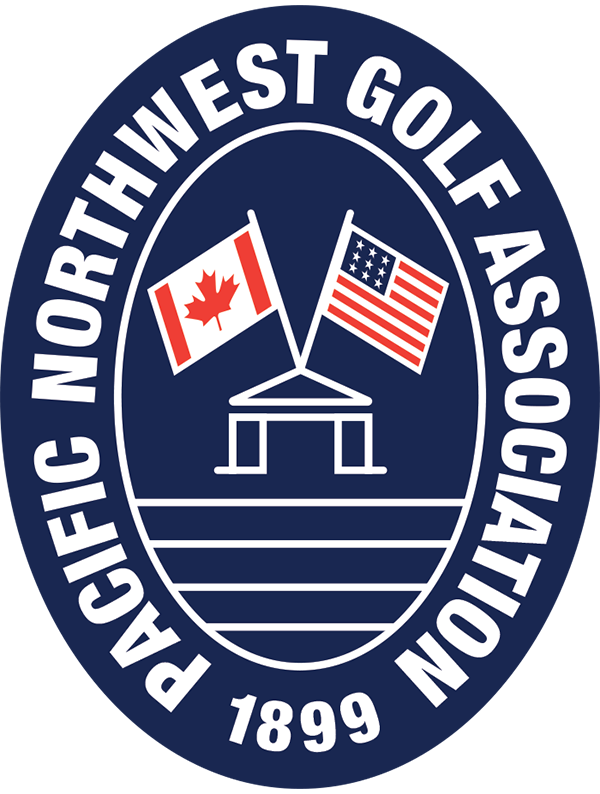The Story of Anne Quast Sander (Hall of Fame Inductee 1999) – Part 1

Introduction by Jeff Shelley | All photos courtesy Anne Quast Sander
About the only player from the Pacific Northwest – male or female – who can rival the career record of Anne Quast Sander is her long-time rival, JoAnne Gunderson Carner. But while the titles won by the “Great Gundy” took place on amateur and professional stages, all of Sander’s came as an amateur during a remarkable four-decade stretch.
With seven USGA championships won, Sander – along with Carol Semple Thompson – ranks behind only Bobby Jones and Tiger Woods (nine), Carner and Jack Nicklaus (eight). Further proving Sander’s longevity, only Marlene Stewart Streit (winner of the 1956 U.S. Women’s Amateur and 2003 U.S. Senior Women’s Amateur) went longer between their first and last USGA wins. It was 35 years between Sander’s victories in the 1958 U.S. Women’s Amateur and 1993 U.S. Senior Women’s Amateur.
Though slight of build, Sander was a dominant force on the golf course. Her 14-and-13 win over Phyllis Preuss in the
1961 U.S. Women’s Amateur at Tacoma Country & Golf Club is tied for the largest winning margin ever by a man or woman in a championship match.
So how did this Marysville, Wash., native – now 73 – who grew up at Cedarcrest Golf Course, make the cover of Sports Illustrated and, with Carner, Pat Lesser Harbottle and Ruth Jessen, propel Northwest golf as a national force in the 1960s?
Here is Part 1 of the story of Anne Quast Sander, in her own words.
Cedarcrest was an 18-hole public course near Marysville and totally rural; there were only scattered farms around it. It had originally been the Quast family farm where Cordt Henry and his Danish wife, Anna, raised seven children.
It was leased later and made into a golf course. My aunt and father bought the property from the family in 1935. My parents were not golfers. It was strictly a business venture; my father initially worked swing shift as a chemist at Weyerhaeuser in Everett because he didn’t know if the golf venture would succeed. They didn’t even have a cash register, instead collecting money in a wooden cigar box. My mother made tuna and egg-salad sandwiches, and served the customers on simple stools at a counter.
The clubhouse itself had been the old apple-packing shed that processed fruit grown in the large orchard my grandfather
 planted. When the farm’s lessees created the golf course, that shed was attached to the original farmhouse and became the clubhouse.
planted. When the farm’s lessees created the golf course, that shed was attached to the original farmhouse and became the clubhouse.
My father’s work ethic was remarkable. With a neighbor’s son, George Ames (who later served in General George Patton’s army during World War II), he kept up the course and did all the accounting work. In 1936, my mother, an only child, became pregnant. I have been told that her mother was quite upset as she thought my mother was too young and emotionally fragile. (I learned later that my mother was bipolar, but not much was understood about that then.)
(At right: A young Anne Quast receives her first golf lesson from her grandfather)
I was born August 31, 1937. My mother continued to work in the clubhouse, so I was often set out on the covered porch in what was called a Teeter-Babe. I would be dressed in beautifully smocked or frilly dresses, which my grandmother would shop for and send from Meier & Frank in Portland. I must have been quite a sight as I was husky and had absolutely no hair. The story goes that mother once looked out the window to check on me and a man was patting my bald head and saying, “It’s okay, sonny, they can’t make a sissy out of you.”
When I was two, Reverend Norgaard from Everett brought me a little set of wooden-shafted golf clubs in a plaid bag. I have often wondered how he obtained them, as children’s clubs were very rare then. (I am very sad they were not kept by my parents; I would have loved to have donated them to the USGA Museum.)
At some point, Lila, whom I adored, was hired to serve the customers, probably when my mother became pregnant again with my brother, who was born January 5, 1941.
There wasn’t a kindergarten out in the country. My mother read to me, and I had a standing wooden blackboard with a roller, which bore the alphabet, numbers and pictures that I found fascinating. There were also no neighborhood children with whom to play. The only time I was with other children was when we visited friends or they visited us.
I remember my mother washed clothes in the basement’s old-fashioned washing machine with a wringer. There were clotheslines near an old root cellar and they were visible from the 18th fairway. A particularly happy memory was getting live bunnies at Easter. My father built pens for them – one under an old apple tree down from the clothesline and the other by the maintenance shed with an overhang to keep “Bosco Bunny” dry when it rained. I would go along the road and pick clover, which they loved.
After turning six, I went to school at Kellogg Marsh, a mile away. It was a two-room schoolhouse with three grades in each room, a big bell in the steeple and lots of outdoor space to play. There were only six of us in first grade. Our teacher, Mrs. Lathrop, was very forward-thinking in a special respect, giving me and my friend, Karen Moskeland, whatever work that she considered us capable of doing. When my and Karen’s report cards came at the end for our first school year, both of them read: “Promoted to the third grade.”

(At left: Young Anne (left) with a friend holding her first set of golf clubs)
From that point forward, I was always the youngest in my class. My early years were very happy ones as I spent quite a lot of time with my father. When I was about three he built a seat for me on the tractor and I rode alone as he mowed the fairways. I also went with him to Marysville on errands. Trying to keep up with him is probably why I have always walked fast.
I do not know at what age I became interested in golf more than anything. I am guessing I was nine or 10. There was a practice putting green and a tiny pitching green at Cedarcrest, though no practice area. But I could hit down the ninth fairway before the customers got there and, in the evenings, I could hit drives off the first-tee mat. There were no grass tees, only mats.
Around this age I would be asked by some of the regulars to play with them. Though very short, Cedarcrest was tight, especially the two new holes my father created through a wooded area. The greens were small and there were no bunkers as my father believed they’d just slow down play – and, of course, add to maintenance costs. To him, golf was strictly a business.
He did improve the old clubhouse, adding a wing and excavating the ground for men’s and women’s locker rooms. He did all the work himself. I remember him getting everyone out of the clubhouse because he was ready to ignite the dynamite!
Even though neither of my parents played golf, they were supportive of my early interest in the game. My father was legally considered a “pro,” so he got ever-larger clubs for me at wholesale. When I was about 11, I was taken to Everett Golf & Country Club for some lessons with their pro, Ken Tucker. When I was 12, one of the members, Billie Torkelson, saw to it that I was entered in the Snohomish County Championship to be played at Everett. In my first competition I was runner-up in the third flight. I know this because I still have the silver-engraved, gravy-boat-and-saucer trophy.
At 13, I was a freshman in Marysville High School and soon became No. 1 on the boy’s golf team. The guys on the team weren’t very good, but some players from the other schools were excellent. Since I did not like losing, I began practicing harder.
In the summer of that year, two members of the Ladies Golf Group at Cedarcrest, Helen Ingram and Helene Kendall, asked my parents if they could take me down to Jackson Park Golf Course for the Washington State Public Links Championship. In those days there were only two-lane roads between Seattle and points north, yet my folks drove the nine miles from Everett to Cedarcrest so I could play. They made quite a few trips back and forth as I made it to the final, where I lost badly. But the competition bug had bitten!
Part 2 will include Anne’s mid-teen years when she began emerging on the national stage, and her enrollment at Stanford.
Jeff Shelley is the editorial director for www.cybergolf.com and authored three editions of the book, Golf Courses of the Pacific Northwest.





